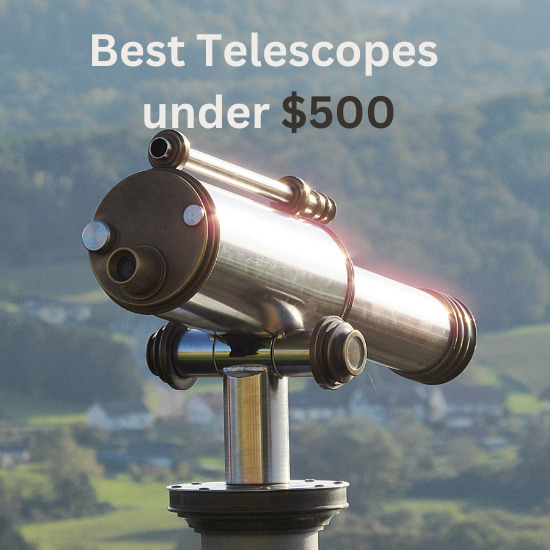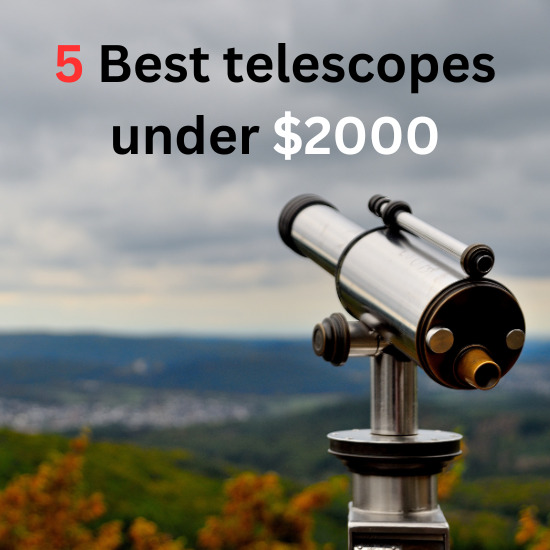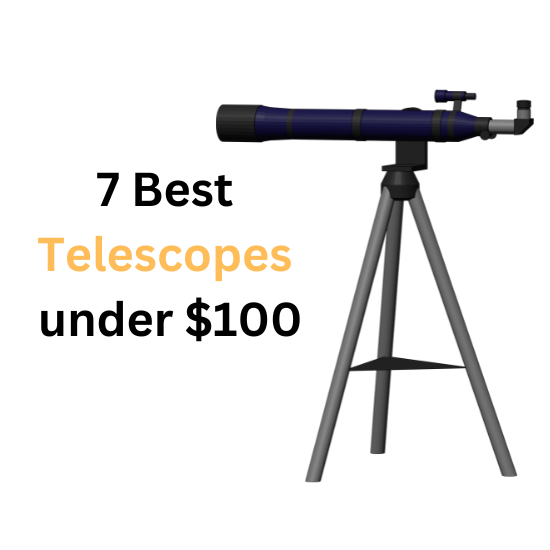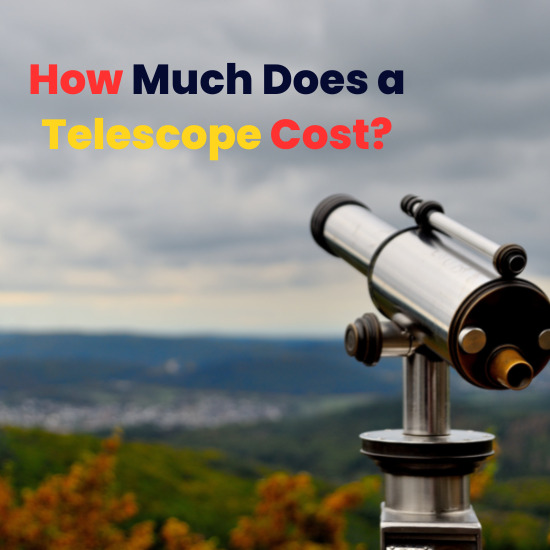The best telescope for viewing planets and galaxies for beginners is the one that best suits your needs. There are many different types of telescopes, which means you need to think about what you want to see with the best telescope before you buy it. You might not be able to afford a top-of-the-line telescope, but there are some great options out there for those who have more limited budgets. This article will discuss how to choose the best telescope for viewing planets and galaxies for beginners.
15 Best Telescope For Viewing Planets And Galaxies
Here is the list of the top 15 Best Telescope For Viewing Planets And Galaxies in 2024.
Planets and galaxies are some of the most fascinating things to see in space. However, not everyone has a telescope at their disposal. So what options do you have if you want to view these celestial bodies? Well, one option is to use a camera that allows long exposure shots of objects in the sky. The trouble with this method is that it can be difficult to capture clear images due to poor lighting or other factors. Another option is photoshop editing which requires purchasing expensive software and skills for manipulating photographs. If you’re looking for an easier way to get great photos of planets and galaxies without too many complications.
Some of the Best Telescope For Viewing Planets And Galaxies are given below:
The Celestron NexStar series is a comprehensive set of high-end telescopes that cover the spectrum  from beginner to expert also best for viewing planets. With an 8-inch aperture, plus technology in each model you can rest assured your equipment will have what it takes for any project.
from beginner to expert also best for viewing planets. With an 8-inch aperture, plus technology in each model you can rest assured your equipment will have what it takes for any project.
Specifications
- Model: Celestron 11069
- Aperture: 8-Inch
- Focal Length: 2032 millimeters
- Weight: 10.88 Kilograms
Pros- Easy to use for beginners.
- High performance for deep-space objects.
- Relatively light for a computerized telescope.
Cons- Costly.
- Magnification limits

The Sky-Watcher EvoStar 80 APO Doublet Refractor is a wonderful telescope for beginners and experienced astronomers alike. It is easy to use, provides clear images of the moon and stars, and has a reasonable price. This blog post will discuss how this telescope can be used in different environments, as well as some ways it could be improved.
Also one of the best telescopes for viewing planets

Specifications
- Model: Sky-Watcher S11100
- Focuser: 10:1 dual-speed Crayford-style focuser
- Eyepieces: 1.25”
- Weight: 7.3 Pounds
Pros- It’s easy to use.
- You’ll be able to see the moon and planets in detail.
- High-quality instrument

Celestron AstroMaster 130EQ Newtonian Telescope
The Celestron Astromaster 130EQ is an excellent choice for anyone looking to get into astronomical viewing. With its expanded range of eyepieces and mountings, this classic design can accommodate different types of optics so you’re never limited in what kinds of tools are at your disposal.
Specifications
- Model: Celestron31045
- Focuser: manual focus
- Eyepieces: (20mm and 10mm)
- Weight: 26.5 Pounds
Pros- Easy to use.
- Great price.
- Save time and money.
Cons- Not Useable For Astrophotography

Orion 10015 StarBlast 4.5 Astro Reflector Telescope
The Orion StarBlast is a small yet powerful telescope that can be used by amateurs and professionals alike. It features an easy-to-use interface and a wide field of view at 4º with 2 Kellner eyepieces.
Specifications
- Model: Orion
- Focal Length: 450 millimeters
- Eyepieces: Kellner
- Weight: 13 Pounds
Pros & Cons
Pros- It’s easy to use for beginners.
- The scope is user-friendly.

Celestron 70mm Travel Scope
The portable 70 mm f/5 telescope is a great choice for those who want to take their astronomy with them on the go. With its compact design and up to 40x magnification, this scope offers sharp images that will provide hours of exploration into space.
Specification
- Model: Celestron21035
- Aperture:70mm
- Eyepieces: (20mm and 10mm)
- Weight: 3.3 Pounds
Pros- Lightweight and easy to carry.
- Affordable.
- Portable.

You’ll never be at a loss for amazing photos and videos again, with the Meade 216004 telescope. This model offers a focal length of 1000 mm paired up with an aperture size of 114 mm which provides excellent image quality! The equatorial mount also features slow motion control so you can view in different directions without worrying about your footage turning out blurry or grainy like what would happen if using something less than perfect such as Home Theater Projectors (HTTP).
Specifications
- Model: Meade Instruments Polaris
- Aperture: 130mm(5. 1″)
- Eyepieces: 1
- Weight: 26.8 Pounds
- Focal Lenght: 650mm
Pros- Enjoy the wonders of astronomy.
- Affordable.
- Focal Lenght: 650mm

Sky-Watcher SkyMax 180 Pro Maksutov-Cassegrain
The SkyMax 180 Pro is the largest in its class, yet despite being only 7 inches across it manages to produce excellent views. Maksutov-Cassegrain telescopes use mirrors and front correctors lenses that are combined with an optics tube creating a compact design for portability without sacrificing quality when up close or having large aperture requirements such as planets orbiting nearby stars.
Specifications
- Optics: Maksutov-Cassegrain
- Aperture: 180mm
- Focal length: 2,700mm (f/15)
- Weight: 7.8kgs
- Focuser: Movable primary mirror
Pros- Friendly Use.
- Light Weight.
- Very Portable Size
Cons- Not Good For Experienced Use.

SkyWatcher SkyMax 127
The SkyMax 180 Pro is one of the largest and most impressive models in this telescope’s range. Even though it only has a 7″ mirror, it still manages to produce sharp images with plenty of detail that would otherwise be missed by less powerful lenses or binoculars! The Maksutov-Cassegrain design employs two panels separated by an optical train that houses all parts necessary for magnification; you’ll find yourself looking at nature through different eyes when using these types because they offer up much more information than your average pair could ever hope to provide on their own – no matter how large those prisms may seem from afar.
Specifications
- Model: Sky-Watcher Maksutov-Cassegrain 127mm
- Eyepieces: Barlow
- Objective Lens Diameter:127 Millimeters
Pros- Take good and clear pictures of planets.
- Portable.
- Affordable price

Celestron NexStar Evolution 8
The NexStar Evolution 8 is a wonderful, affordable telescope that can be used to observe and take photos of planets in our solar system or other astronomical objects. The OTAs are identical with the exception of tech upgrades such as enhanced magnification binoculars option on top-end models which provide more convenient features when it comes time to focus your eyesight.
Specifications
- Model: Celestron
- Eyepiece: Plossl
- Weight: 16330 Grams
- Focuser: Manual focus
Pros- Multipurpose.
- Technical upgradations available.
- Easy Use.
- Wifi Connectivity

Celestron CPC 925 XLT
The CPC 925 XLT is a high-quality, powerful telescope. If you want to take your observing game up another notch then this might be just what you need! Not only will it provide superior viewing capabilities, but with all of the included accessories like an adjustable mount and various other parts that can help make stargazing more convenient than ever before there really isn’t anything left out when purchasing one for yourself.
Specification
- Model: Celestron11074-XLT
- Objective: Lens Diameter:235 Millimeters
- Weight: 60 Pounds
- Focal Lenghth:2350 millimeters
Pros- With a good 9.25” aperture.
- Multi-purpose.
- Very great for Astrophotography.

Explore Scientific CF ED 102 APO
This Explore Scientific (ES) telescope will be an overkill buy just to view planets, and it’s not the best for viewing them in their as-is state. So why consider using one? For those who may already have high-end refractors or are mainly imaging scientists looking at astronomical objects this product can work well for both observations of celestial bodies like nebulas galaxies etc., but also planetary observing when paired up alongside a stronger instrument such as a CNC machine tool which allows you see much deeper into space than what is visible from our own planet due.
Specifications
- Model: FCD100-127075-CF
- Objective Lens Diameter:102 Millimeters
- Weight: 7 Pounds
- Focal Lenghth:714 millimeters
Pros- Best for advanced user.
- Can be used as dual-purpose.
- With good quality carbon fiber tube.
- Good performance for Astrophotography.

Orion SkyQuest XT6 Classic Dobsonian Telescope Kit
The Orion SkyQuest XT6 Classic Dobsonian Telescope Kit is a classic telescope with an exceptionally large aperture and the best of both worlds: it provides exceptional views of deep space objects, as well as planets and terrestrial targets. This scope includes two eyepieces (25mm & 10 mm) which offer different magnifications to suit your needs; together they provide up to 300x magnification through a 3x Barlow lens or EZ Finder II reflex sight for easy aiming–it has been designed especially by professional astronomers who know all there is about optics! The collimation cap will help keep track of alignment issues while you’re observing so get ready because this quality device takes looking at stars seriously. 
Specifications
- Model: Orion
- Objective Lens Diameter:150 Millimeters
- Eye Piece Lens Description: Plossl
- Focal Lenghth:1200 millimeters
Pros- Very helpful for beginners.
- Good performance.
Cons- Not good for professional use.

Celestron NexStar 130
The Celestron NexStar 130 is a computerized telescope that allows for the tracking of objects in the night sky. The telescope was designed to be easy to use and portable, allowing amateur astronomers the ability to travel with their telescope and view different stars as they move across the night sky. This product has been praised by both amateurs and professionals alike due to its high-quality images, ease of use, portability, anti-reflective optics that allow for clear viewing even at higher magnifications, and durability.
Specifications
- Model: Celestron NexStar SLT Series
- Objective Lens Diameter:130 Millimeters
- Item Weight:11.4 Pounds
Pros- Fully computerized.
- Portable.
- Have the power to see 40,000 planets and stars.

How to Choose a Telescope: Types, Budget Considerations, and Important Factors
If you’re looking for your first telescope, this is the right guide. We’ll go over all of the basics and then point out some specific features that might interest someone who has more experience with astronomy gear.
I hope I will not bore anyone when it comes to technical terms like focal length or magnification; however, these things do play an important role in selecting what kind best suits one’s needs.
Choosing the perfect telescope for you is an important decision. The best way to start your search is by answering questions like: What am I most interested in looking at? Is my sky dark enough so that stars are visible on clear nights or will it take supplementation with lights (i.e., city view)? Do I plan on observing objects close up, far away, and everything in between; what kind of experience do want? Do expenses matter more than weight, carried when hiking through nature
APERTURE
A telescope’s aperture is the most important factor in determining how bright an object looks. It can either be a lens or mirror, and it determines both its light-gathering ability (how much brightness) as well as resolving power–the sharpness of the image seen on the screen/mirrors larger these scopes, usually more impressive any given star will look because they have deep resolved with little data loss due to coma issues that occur when observing smaller bodies such planetoids nearby solar system objects like Jupiter, etc…
Bigger is not always better. So it’s important to consider your needs when choosing what kind of instrumentation will serve you best in the long run. You may want a large-aperture telescope if mobility isn’t an issue; however, this type can also present challenges such as size restrictions due to its weight (bulky) which could make transporting on airplanes difficult, for example – plus carrying up flights stairs might create some unfair advantages during a competition between competitors since they’re able to use their bigger dimensions at altitude.
Magnifications
A novice often asks, “How much does it magnify?” The answer to this question is any amount you want. With many different telescopes and eyepieces available on the market today – there’s an almost infinite range of magnification depending on what type of telescope one chooses for their observing adventure with us! One challenge, though can be figuring out how best to see all these details without spreading out our precious light, too much-and atmospheric conditions will play havoc in limiting how many times someone might actually usefully utilize such an instrument overtime period (aperture) unless
They are very patient astronomers who know exactly where each object should appear against background stars during clear skies at night when viewing deep space objects. Magnification is the key to success when viewing and analyzing celestial objects with your telescope. Magnifications should range from 50x for smaller scopes all the way up to 2000X, but if you see advertisements claiming 300x or 1000 X then know that these are just hyped by marketing departments because higher magnifications don’t always provide better results so keep looking elsewhere before buying this product as well those making promises about increased magnification levels exceeding what’s possible given today’s technology.
In order to get the most out of your observing session, it’s important that you find an optics set up with at least 8X magnification for viewing deep-sky objects like clusters and nebulae. If looking into galaxies is what interests, you then 40+ times per inch might be useful as well. it is important to factor for a telescope for viewing plantes
FOCAL LENGTH AND EYEPIECES
Now you know the range of useful magnifications for any given instrument. But how do they get these numbers? What does an eyepiece’s focal length tell us about the magnification it offers, and why is this important information worth knowing when buying your next scope?
A telescope has a certain number printed or engraved on its front or back (between 400m m to 3k) called “focal length”. This refers not just to their physical dimensions but also to what kind of image formation occurs within that tube as well; some scopes fold light internally instead of by using mirrors close together near one end while leaving room at other ends closer together). Knowing both those details will help answer questions like: How far away am I looking through such-and-such? Magnification is the term used to describe what degree of enlargement a telescope, camera, or microscope has.
Magnifications can be anywhere between 1× and 40x; most professional astronomers will tell you they need at least 10 times more powerful than this for their work! To find out how many millimeters in diameter your object needs on-screen (or paper), divide its total length by its magnification- with smaller objects requiring less depth when displayed thanks again to high-resolution imaging techniques like CT scanning where no background. A telescope’s focal length is the measure of the distance between its optical components, such as lenses and mirrors.
The more precise you want your observations to be, the longer this measurement needs to be in order for starlight to enter through all parts of it equally which leads us to our next question: What ratio should a given sized mirror/lens combo have? This will depend on how much light shines off each side; an answer can not simply fall from above without considering these angles first! For instance, just two slits width apart at 45-degree angles gives us 1 arch over 3 segments.
If you want to get the most out of your telescope, make sure it can accept larger eyepieces. Almost all modern telescopes come with barrels either 1¼ or 2 inches in diameter-but some premium-quality models also take both sizes! This will let them use long focal-length instruments for low magnification views and wide fields that are perfect when stargazing without any obstruction.
TYPES OF TELESCOPES For Viewing Planets.
A telescope is not just a box with lenses. There are many different types to choose from, and they all have their own unique features that you need if your goal is magnification or observation in depth! While it may seem as if there’s an infinite variety of options, the truth is that not every option will work for you. when browsing through advertisements though: these three classes can essentially break down into refractors (manifold-shaped), reflectors (employing mirrors), and catadioptrics(a type of solar microscope).
Some of the main categories of telescope for viewing planets are these:
Refractors
The stereotypical way to describe the look and function of a telescope is with reference to this type: A long, gleaming tube with an eyepiece at either end. When properly designed and built in accordance with its specifications (namely having more light-sensitive lenses than mirror), refractors typically deliver sharper images per inch as opposed to other designs such as mirrors or catadioptrics which require secondary mirrors upfront blocking some incoming rays for them not be blocked out completely by these obstructions so do give you what you want but only if they are top quality 4″.For those who enjoy viewing the night sky, apertures come in all shapes and sizes.
For those that want to take their observing on the go but still get great views of deep space with lots of clarity—refractors are an excellent choice because they can provide amazing performance at smaller diameters than other types such as apo or catadioptrics which only work well for larger telescope models due to their costliness; not mention larger glass lenses don’t fit inside compact portable units like binoculars.
Reflectors
A reflector telescope is a good choice for beginners. It has an advantage over other types because it can provide sharp images, even if the focal length of its eyepieces isn’t as long or wide compared to other scopes on the market today. If you want a more expansive field without having too many moving parts bother your view through the scope itself then this may be the perfect option. Newtonians offer two important advantages over refracting instruments. They work well across a range of focal ratios, meaning you can use them to take photos with wide fields of view and without expensive cameras or lenses; plus the eyepiece is at the top so your field of vision won’t be limited by its pivot point below the head height like it would if looking through binoculars for example (or even some telescopes).
A popular type in this category is Dobsonian mounts which operate simply enough–and due entirely too many times before now!–allowing their users flexibility not seen elsewhere on Earth. Collimating a Newtonian reflector isn’t as easy to do as it sounds, but if you’re mechanically inclined and want your telescope to last longer than just about any other type of optical instrument out there then collimation is an absolute must.
The mirrors in most telescopes need occasional maintenance because they can become misaligned over time or moved around without enough care which would result in poor performance from the device depending on how much abuse it’s been taking by moving all over town every day like we generally do. They also are the best telescope for viewing planets and galaxies
Catadioptrics
There are three different types of telescopes, each with its own unique features. The first type is called a refractor and they use lenses to form an image in space. These were invented back when skies were clearer than they are now so that we could view more stars on Earth! However optical quality wasn’t great which meant people didn’t really start using them until the 20th century became known as “modern times.”
The second kind I am going over here has mirrors attached outside its tube like you would see on top or bottom-end Cassegrain models; this help gather light before sending it into the lens system inside out container – sometimes referred to as enclosure by some vendors who sell such equipment (a word commonly But here too there are limitations. Most Schmidt-Cassegrains have an f/10 focal ratio,
Maksutov Cassegrain heavens usually have even longer focal ratios to them which means that they’re unable to produce genuinely wide low power fields lens or some other accessory item for your scope if you want one with more manageable eye relief when using binoculars etcetera. The Schmidt-Cassegrain telescope is an excellent choice for those who enjoy the challenge of fine equipment engineering.
This type can be pricey, but delivers superior images to its counterparts in both reflectors and is refractive when well made with high-quality lenses that are not too far apart from each other along their focal length so there’s little degradation due to tinkerings like collimation adjustments on occasion which will help keep it lasting longer than either one would otherwise last without any tweaking at all.
EVERYTHING HAS ITS PRICE
A cheap telescope will only disappoint you. The best way to get a decent scope for less than $150 is by shopping carefully, but even then it’s possible if the price range isn’t too high! A 6 – or 8 inches Dob would be suitable with prices anywhere from roughly 300 dollars up to 500 dollars. Begin You might find that you have to try out cheaper ones until the right fit is found. A fun hobby that can be useful for many things, such as understanding your personality or predicting future events. There are plenty of accessories you will want with an Astro manager including eyepieces to increase magnification range and other tools like guidebooks on the sky in different locations around town- these books help make sure there’s no confusion about what constellation any given star belongs to!
Also, remember this tip: save some money from buying new eyestrings by tying old shoelaces together instead so they last longer but still provide enough tension when needed most
Conclusion:
Conclusion paragraph: To help you choose the best telescope for your needs, we’ve provided a list of important factors to consider and some popular types. We hope this has been helpful in deciding which type of telescope might be right for you! If it sounds like a lot of work or too much information all at once, don’t worry! There are many resources available online that can help make choosing a telescope easier. Our team is also ready and waiting to answer any questions about telescopes or astronomy with personalized attention.
Faqs
How to figure out the right one?
The best way to choose a telescope is by checking out its aperture. The larger this number, the lighter it can collect and thusly show you objects both near AND far away.
You can check reviews of telescopes here
What type of telescope is best for viewing planets?
Telescope is best for viewing planets telescope is a great way to get started with astronomy. The more magnified an object appears, the less distracting it will be in your home or office setting up shop on its own just outside of town! A 3-inch refractor can provide stunning views while 6-inch reflectors offer deep blackness that may require some light sources but still allow viewers plenty of visibility because their main purpose was originally created for daytime use so they don’t need much illumination compared to what people would prefer at night time.
How effective 70mm is?
A 70mm telescope will allow you to see every planet in the Solar System with ease. You can also take a look at most of Jupiter’s moons, including its satellite Io which has active volcanoes! Mars is spectacular through this size of scope – notice all those faces? They are part iced-over glaciers masking ancient ocean floors hiding under thick layers.










































































